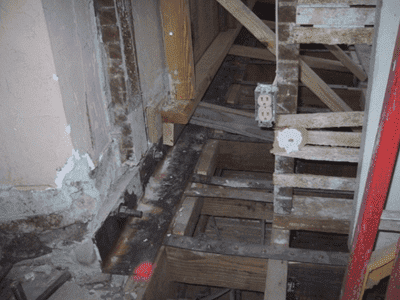Expanding the Official National WWII Museum of the United States
Location: New Orleans, LA
Age/Built: Built 1845, 1890
Adaptive Reuse, Gruenstark (GS) Anchors, Services, Stabilization of Historic Structures, Testing and Analysis

Project Background:
- Founded in 2000 as the National D-Day Museum by Band of Brothers author Stephen E. Ambrose
- Designated by congress as the official WWII museum of the United States in 2003
- In 2007, museum operators launched an aggressive expansion program for the campus, including the incorporation of neighboring buildings over 150 years old
Challenges Presented:
- Any repair program that took place needed to allow for normal museum operations to continue and this historic building’s appearance to be left unchanged
- The structures required additional stability and resilience in order to accommodate the bold new plans for them, which included a dining room, offices, theatre and entertainment wing
- Previous repairs, including those removing their original wood pillars, left the masonry in disrepair
Services and Solutions:
- The 3 wythe masonry walls comprising the buildings were in poor condition, requiring cautious intervention while simultaneously adhering to the project schedule
- Masonry Solutions started by carefully following a protocol of dry coring intended to avoid excess disruption to the historic masonry
- This protocol called for medium-mesh Gruenstark (GS) anchors to be installed in critical strengthening areas, including the void encompassing 3-wythe masonry walls.
- Concealed GS two-piece anchors were manufactured and installed by MSI in order to leave the appearance of these buildings virtually unchanged
- The anchors were bonded to the surrounding masonry using a heritage CIF mix engineered by Masonry Solutions’ laboratory techs to perform in a sympathetic manner within the host structure while simultaneously solidifying masonry voids and minimizing shrinkage
- MSI technicians injected the façades of the deteriorated buildings using a low pressure CIF injection
- MSI techs were extremely careful to leave the historic buildings as they found them so that patrons could enjoy their original aesthetics
- Today these buildings still house the dining and entertainment wings of the National WWII Museum, including the Solomon Victory Theater








